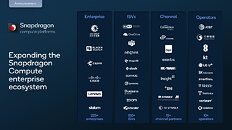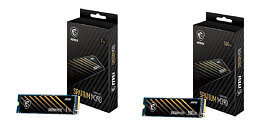
Qualcomm "Snapdragon 8s Gen 3" SoC with Adreno 735 GPU Gets Geekbenched
A mysterious Qualcomm Snapdragon "SM8635" model emerged earlier this month—courtesy of ever reliable smartphone tech tipster Digital Chat Station. They claimed that the unnamed mobile chipset had posted an AnTuTu score of roughly 1.7 million, with specifications including one Cortex-X4 core clocked at 2.9 GHz and an integrated Adreno 735 GPU. TSMC's 4 nm process node was also mentioned—not a particularly big revelation since the latest Snapdragon flagship is a 4 nm part. Early guess work pointed to possible Snapdragon 8s Gen 2 or Snapdragon 8 Gen 3 Lite guises, but a Geekbench Browser leak indicates that SM8635 is destined to become "Snapdragon 8s Gen 3," in Digital Chat Station's opinion.
A Realme "RMX3851" android device was tested in Geekbench 6.2.2—stated specifications include a 3.01 GHz "Big" Core clock, Adreno 735 GPU, and a 1+3+4 cluster configuration. Many believe that the SM8635 is positioned as a cut-down alternative to Snapdragon 8 Gen 3 (SM8650-AB), given that Realme specializes in producing value-oriented "near flagship" specced smartphones. Wccftech has spent hands-on time with various Qualcomm Snapdragon 8 Gen 3-powered devices: "You can see in (Realme's Geekbench entry) that the alleged Snapdragon 8s Gen 3 does not perform on the same level as its elder brother, which scores higher in both single and multi-core. For the sake of reference, I have seen the elder sibling going as high as 2,329 in single-core tests and 7,501 in multi-core tests. So, this chipset is performing at half the speed, but of course, this seems like a device that is not completely ready, so the final scores might improve." Further (insider) leaks or an official Qualcomm announcement will confirm whether the posited "Snapdragon 8s Gen 3" moniker is a good guess, although another leaked chip suggests another path. Roland Quandt reckons that a similarly configured "SM7675" SoC will be joining the Snapdragon 7 Gen family.
A Realme "RMX3851" android device was tested in Geekbench 6.2.2—stated specifications include a 3.01 GHz "Big" Core clock, Adreno 735 GPU, and a 1+3+4 cluster configuration. Many believe that the SM8635 is positioned as a cut-down alternative to Snapdragon 8 Gen 3 (SM8650-AB), given that Realme specializes in producing value-oriented "near flagship" specced smartphones. Wccftech has spent hands-on time with various Qualcomm Snapdragon 8 Gen 3-powered devices: "You can see in (Realme's Geekbench entry) that the alleged Snapdragon 8s Gen 3 does not perform on the same level as its elder brother, which scores higher in both single and multi-core. For the sake of reference, I have seen the elder sibling going as high as 2,329 in single-core tests and 7,501 in multi-core tests. So, this chipset is performing at half the speed, but of course, this seems like a device that is not completely ready, so the final scores might improve." Further (insider) leaks or an official Qualcomm announcement will confirm whether the posited "Snapdragon 8s Gen 3" moniker is a good guess, although another leaked chip suggests another path. Roland Quandt reckons that a similarly configured "SM7675" SoC will be joining the Snapdragon 7 Gen family.














































































